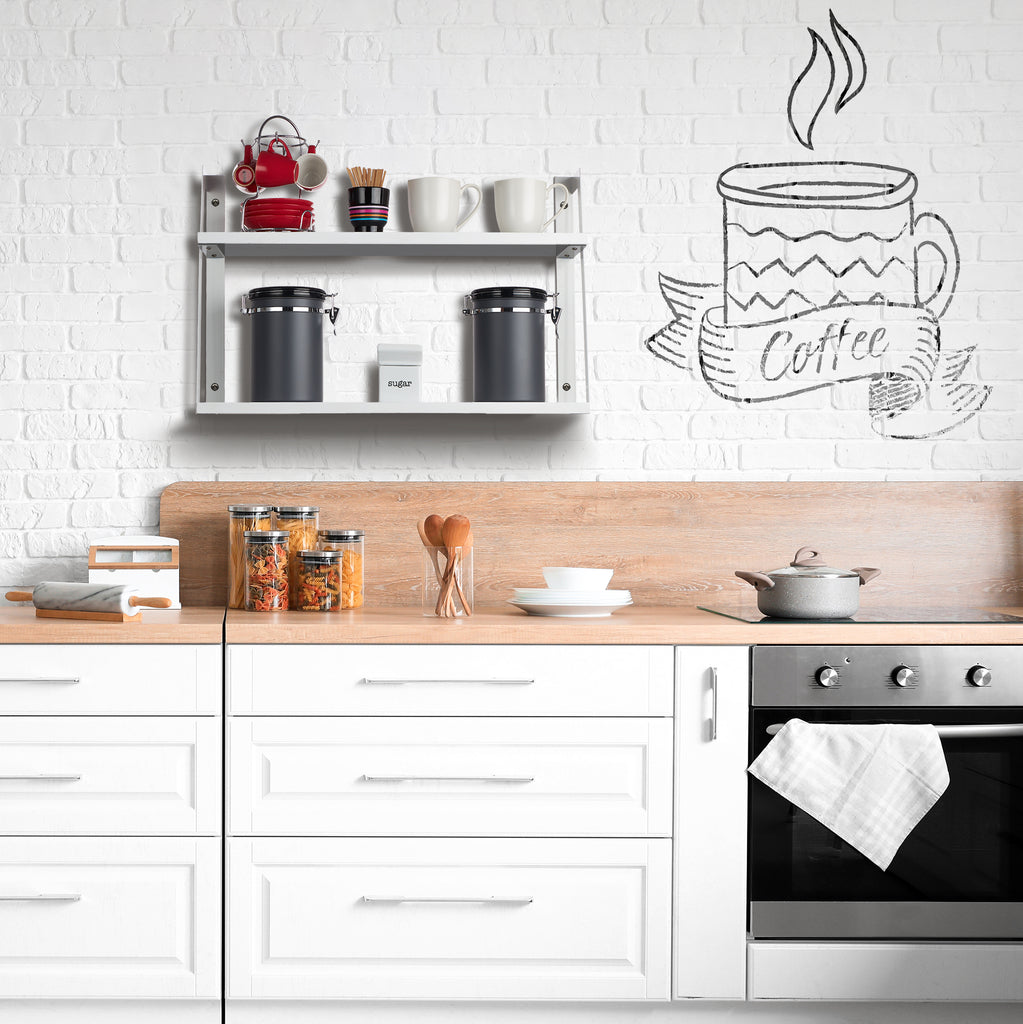Discover the Best Practices for Spacing Floating Shelves to Enhance Your Home Decor
Floating shelves are a popular choice for homeowners looking to add both style and functionality to their living spaces. Whether you're displaying cherished collectibles, organizing books, or showcasing decorative items, the spacing between floating shelves plays a crucial role in achieving a balanced and visually appealing look. In this comprehensive guide, we'll explore the ideal spacing measurements for floating shelves, taking into account various factors such as room size, shelf purpose, and design aesthetics.
Understanding the Basics of Floating Shelf Spacing
Before diving into specific measurements, it's important to understand the basic principles of floating shelf spacing. The distance between shelves can significantly impact the overall appearance and usability of your shelving arrangement. Here are a few key considerations:- Purpose of the Shelves: The intended use of the shelves will influence the spacing. For example, shelves used for displaying small decorative items may require closer spacing, while those for storing larger items like books or kitchenware may need more space.
- Room Size and Ceiling Height: The dimensions of the room and the height of the ceiling can affect how shelves are spaced. In smaller rooms, closer spacing can create a cozy feel, while larger rooms may benefit from wider spacing to avoid a cluttered look.
- Visual Balance: Achieving a visually balanced arrangement is essential. Uneven spacing can make the shelves look haphazard and disrupt the harmony of the room.
Ideal Spacing Measurements for Floating Shelves
1. General Guidelines for Spacing
- Standard Spacing: A common rule of thumb is to space floating shelves 12 to 18 inches apart. This range provides enough room for most items while maintaining a balanced look.
- Closer Spacing for Smaller Items: If you're displaying smaller items such as picture frames, candles, or small plants, consider spacing the shelves 8 to 12 inches apart. This closer spacing creates a more intimate and cohesive display.
- Wider Spacing for Larger Items: For larger items like books, kitchenware, or larger decorative pieces, spacing the shelves 18 to 24 inches apart can provide the necessary room and prevent overcrowding.
- Living Room: In living rooms, floating shelves are often used to display decorative items and personal mementos. A spacing of 12 to 16 inches is generally ideal, allowing for a balanced and visually appealing arrangement.
- Kitchen: In kitchens, floating shelves are typically used for storing dishes, glassware, and cooking essentials. A spacing of 15 to 20 inches is recommended to accommodate larger items and ensure easy access.
- Bathroom: For bathrooms, where shelves are used for toiletries and small decorative items, a spacing of 10 to 14 inches works well. This closer spacing helps create a neat and organized look.
- Bedroom: In bedrooms, floating shelves can be used for books, decorative items, and personal accessories. A spacing of 12 to 18 inches is suitable, providing enough room for various items while maintaining a tidy appearance.
- Consistent Spacing: Maintain consistent spacing between shelves to create a cohesive look. A spacing of 10 to 14 inches is often ideal for gallery walls, allowing for a balanced display of artwork, photos, and decorative items.
- Varying Heights: To add visual interest, vary the heights of the shelves while keeping the spacing consistent. This approach creates a dynamic and engaging arrangement.
Tips for Achieving the Perfect Spacing
- Measure and Mark: Before installing the shelves, measure and mark the desired spacing on the wall. Use a level to ensure the marks are even and straight.
- Consider Shelf Depth: The depth of the shelves can impact the spacing. Deeper shelves may require wider spacing to prevent a crowded look, while shallower shelves can be spaced closer together.
- Use Templates: Create paper or cardboard templates of the shelves and tape them to the wall to visualize the arrangement. This step allows you to make adjustments before drilling any holes.
- Balance Functionality and Aesthetics: While aesthetics are important, don't forget about functionality. Ensure the spacing allows for easy access to items and provides enough room for their intended use.
- Seek Inspiration: Look for inspiration in home decor magazines, websites, and social media platforms. Seeing how others have arranged their floating shelves can provide valuable ideas and insights.
Now that you know how to achieve the perfect spacing and measurements for your floating shelves, it's time to bring your vision to life. Explore our premium collection of floating shelves. With variety of styles and finishes, you'll find the perfect fit for your home decor.
Make It Yours at Peter's Good Collection
Elevate your space with stunning, functional floating shelves that reflect your unique style!

